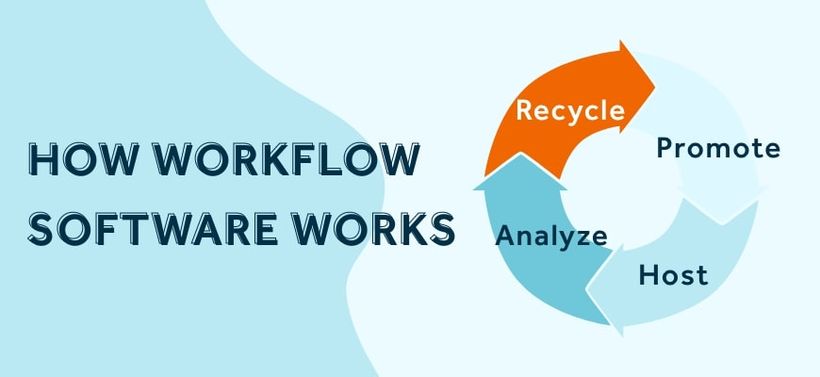Divide tasks with workflow software
Pam
17 May 2021 - 4 min
During the pandemic, we started working from home more and more. Interacting with colleagues is different these days. Preparing something in pairs or with more people is harder from home than together in the office. You have to distribute tasks remotely, but how do you do that? And how do you know what everyone is working on or how far along someone is?
What can you do with workflow software?
Clarity about the same goal makes for a great joint product. Workflow software makes it clear who is doing what and what goal is being worked on. There is no longer any confusion about who is doing what: it is clear to everyone and therefore more efficient. Because you link tasks to people, each colleague has responsibility for his own task. Do you have questions? Then it is clear who is responsible and who you should contact.
How workflow software works
In workflow software you can often create lists or cards with tasks on them. For each list or ticket you create, you can add files or links directly. It is easy to see what is running and needs to be done. You invite your colleagues or cooperation partners and add them to the system. You can also assign tasks to someone and get updates on deadlines. Nothing is forgotten or duplicated anymore!
Setting up a workflow is not difficult. You follow the these steps:
Step 1: Choose a workflow software and create an account
You can choose from a lot of workflow tools. If you want to link with Zapier, Process Street is a good option. After you have created an account, invite colleagues or partners and it's time to get started!
Step 2: classify the process
Depending on which workflow software you use, create lists or templates. Choose a topic to discuss and hang tasks under it. In this case you can call a template or list for example 'edit webinar' or ‘promote webinar’. You don't need to know exactly what to do before creating the topics. During the process you can easily add tasks.
You can also think of a list for ‘brainstorm’, ‘to do’, ‘in progress’ and ‘done’. If necessary, you can make the to-do list more specific later. Are you working with multiple departments? Then you can think about a list per team, such as marketing or technology. You set it up however you want! In Process Street you choose a template or create your own customized template, you decide how easy or difficult you make it.
During a brainstorming session you can create and organize lists, or you can discuss later which ideas are good, and immediately assign them to a colleague or other collaboration partner. For each task or idea, writing down how much estimated time it takes, helps you later with planning. The advantage of the templates is that you have a clear view collected in one place. A meeting is not necessary to fill the list with ideas. Anyone can put something on the list and you can discuss or decide who will do what task later.
Of course there are also some fixed tasks and things that need to be done, setting up the webinar for example. You can put those in the to-do list. Don't forget to plan some time for a test as well.
Step 3: divide the tasks
Divide the tasks from the list with each other or assign a task to someone who will work on it. When the task on the list is finished, that person can check it off right away! In this way it is clear to everyone what is done, what is left to do and of course who is doing what. By making everyone responsible for their own task, work is less likely to be left lying around and it is useful that there is a point of contact.
Workflow software for planning your webinar
Workflow software makes it very easy to collaborate remotely. You share ideas, divide tasks and consult with each other on just one platform. Divide who creates the webinar, presents, promotes and takes care of technical matters. You can see what needs to be done at a glance!
Download the whitepaper and get more valuable insights straight to your inbox!
Download whitepaper now!Related articles
The Product Demo Video - The Virtual Tour of Your Product
Convince your prospect with a product demo video to go further down the funnel.
How to use a Green Screen for your Webinar
Use a Green Screen for your webinar
Create your own webinar studio
Create your own DIY webinar studio in 6 simple steps!
/f/110864/617x610/445d6c9238/pam_2.png)

/f/110864/870x400/71d19e0112/1620400310_workflow-webinarat2x.jpg)

/f/110864/883x614/83b9d4ede0/browserbased02.png)

/f/110864/870x400/be267869b9/greenscreen-webinars-renewed.jpg)

/f/110864/870x400/5bcac5f794/illustration-man-with-camera-and-woman-hosting-webinar.jpg)
